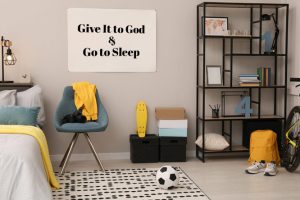How to Choose the Perfect Inspirational Wall Art for Your Space

Assessing Your Space
Before selecting the perfect artwork for your home, it’s essential to take a close look at your space. This assessment leads to a genuinely harmonious integration of art that complements both the size of the room and your existing decor.
- How to Choose the Perfect Inspirational Wall Art for Your Space
- Assessing Your Space
- Determining the Size Requirements
- Considering the Existing Decor
- Finding Inspiration
- Exploring Different Styles
- Reflecting on Personal Preferences
- Understanding Art Types
- Canvas Prints
- Framed Prints and Posters
- Selecting the Right Colors
- Harmonizing with the Room's Palette
- Using Color Psychology to Create a Mood
- Setting a Budget
- Exploring Different Price Points
- Factors to Consider When Investing
Determining the Size Requirements
One of the first steps in this process is determining the size requirements of the art you intend to showcase. The dimensions of your wall and the overall scale of the room play a crucial role in your decision-making. Here are some helpful tips:
- Measure the Wall Space: Start by measuring the width and height of the wall where you plan to hang the artwork. This simple step can prevent the future headache of purchasing something that’s too small or overwhelmingly large.
- Consider the Furniture: Take into account the size and arrangement of your furniture. For instance, if you’re placing the art above a couch, the artwork should ideally be two-thirds the width of the furniture piece for optimal visual balance.
- Visualize with Tape: An easy yet effective technique is to use painter’s tape to outline the dimensions of the art on the wall. This gives you a visual reference before making any purchases.
Considering the Existing Decor
Next, think about the current decor in your home. The artwork you choose should complement the surrounding elements instead of clashing with them. Here are a few considerations to keep in mind:
- Style and Theme: Is your decor modern, rustic, or eclectic? Choose art that aligns with your established theme. For a contemporary space, consider geometric designs or abstract pieces, while a vintage setting may call for landscapes or classic portraits.
- Color Schemes: Pay close attention to the colors present in your decor. Art can enhance or harmonize with these shades, enabling a cohesive look throughout the space. If you have a neutral palette, artworks with vibrant colors can stand out beautifully.
- Personal Connection: Finally, consider your personal connection to different art styles. Choose pieces that reflect your personality or evoke fond memories, transforming your home into a space that truly feels like you.
By meticulously assessing your space in terms of size and decor, you set the stage for selecting artwork that not only fills your walls but also enriches your living environment.
Finding Inspiration
With a clear understanding of your space, it’s time to delve into the next stage: finding inspiration for the artwork that will grace your walls. Art is not just a decoration; it’s a reflection of personal taste and an extension of your personality.
Exploring Different Styles
Diving into various art styles can spark new ideas and help identify what resonates with you most. With so many styles available, here are some popular categories to consider:
- Abstract Art: Known for its use of color and form over representation, abstract art can bring a touch of modern flair into your home. It often evokes emotions that transcend words.
- Minimalism: If your space is filled with clean lines and simplicity, minimalistic art can amplify that aesthetic. Think simple shapes or monochrome palettes that add sophistication without overwhelming.
- Traditional Art: For those with a love for classic styles, traditional paintings—ranging from landscapes to portraits—can add depth and history to your surroundings.
Take a stroll through local galleries or explore online platforms like Pinterest and Instagram to gather inspiration. Curate a mood board of styles that catch your eye. This act can be a delightful process, opening your mind to new ideas you may not have initially considered.
Reflecting on Personal Preferences
While styles provide a foundation, reflecting on your personal preferences is crucial in the selection process. Think about the following aspects:
- Emotional Connection: What themes or subjects resonate with you? For example, if you’ve traveled to the mountains and cherish those memories, consider landscape art that captures that essence.
- Favorite Colors: Your favorite colors can guide you toward pieces that will not only match your decor but also invoke feelings of happiness and tranquility. Create a list of your preferred hues and seek artwork that embodies them.
- Cultural Influence: Reflect on your background and experiences. Art that represents your culture or heritage can bring an authentic touch to your home.
Remember, the artwork you choose should speak to you and reflect who you are. Embrace the journey of exploration and allow it to lead you to pieces that will truly enhance your living space. By intertwining style with personal preference, you will undoubtedly curate a collection that feels uniquely yours.
Understanding Art Types
Now that you have a clearer vision of your preferred styles and personal connection to art, it’s essential to familiarize yourself with the various types of artwork available. Each type has unique characteristics and lends a different vibe to your space.
Canvas Prints
Canvas prints are a popular choice among art lovers due to their versatility and modern aesthetic. They usually feature vibrant colors and can transform the feel of a room instantly. Here are a few reasons people gravitate toward canvas prints:
- Texture and Depth: Canvas prints are often stretched over a wooden frame, adding dimensionality and a tactile quality that flat posters lack. The texture can create a more dynamic visual experience.
- Durability: Being made from high-quality materials, canvas prints are less susceptible to fading over time, making them a long-lasting option for home decor.
- Variety: From abstract designs to stunning photographs, the variety available ensures that there’s something for every taste, whether one prefers bold statements or subtle nuances.
For instance, a large canvas print of a serene landscape or an abstract piece can serve as a focal point in a living room, drawing guests’ attention and sparking conversation.
Framed Prints and Posters
On the other hand, framed prints and posters offer their charm and benefits. They can range from artistic renderings to photographs and are an excellent way to display art with a timeless finish. Here’s what to consider:
- Classic Appeal: Framed prints can complement traditional decor wonderfully, enhancing the classic or vintage feel of a room. With various frame designs available, you can easily find one that aligns with your home’s style.
- Affordability: Often, framed prints and posters can be more budget-friendly than canvas options, making them accessible for those looking to decorate on a budget.
- Flexibility: They are relatively easy to change out, allowing you to refresh your space with new art whenever you feel inspired.
Personal anecdote: I remember starting my art collection with framed posters from my favorite movies. Each one brought joy and nostalgia to my space, showcasing my personality without breaking the bank. By exploring these art types, you can thoughtfully select pieces that not only fit your style but also enrich the atmosphere of your home. Whether you opt for canvas prints or framed prints, consider how each choice contributes to the overall narrative of your living space.
Selecting the Right Colors
After selecting the type of artwork that resonates with you, the next vital step is to choose the right colors. Art is not just about aesthetics; the colors you select can significantly influence the overall ambiance of your space.
Harmonizing with the Room’s Palette
When choosing artwork, it’s crucial to harmonize the colors with your room’s existing palette. This ensures the artwork feels integrated and enhances the overall decor. Here are some strategies to consider:
- Understand Your Color Scheme: Whether your room has a warm, neutral, or cool color scheme, select artworks that resonate with these tones. For instance, a warm-toned painting can beautifully complement a room filled with yellows, oranges, and browns.
- Use a Color Wheel: Familiarize yourself with the color wheel to identify complementary colors—those that sit opposite each other—which can create a vibrant contrast. Analogous colors—those next to each other—can create a more serene and harmonious effect.
- Accent Colors: If you have a main color in your room, consider artworks that use it as an accent. For instance, if your sofa is navy blue, a piece featuring hints of blue alongside other colors can tie the room together seamlessly.
I remember when I chose a bright orange canvas to go above my cream-colored couch. It not only added warmth to the room but also drew attention without clashing with the existing decor.
Using Color Psychology to Create a Mood
Color plays a pivotal role in setting the mood of a space, and understanding color psychology can help in selecting the perfect artwork. Different colors evoke different feelings:
- Blue: Associated with calmness and tranquility, blue can create a soothing atmosphere, ideal for bedrooms or relaxation areas.
- Yellow: Often linked to happiness and energy, yellow can infuse warmth and cheer into any room. It’s perfect for spaces where you want to foster conversation and positivity.
- Red: This bold color can evoke passion and excitement. Use art with red accents sparingly to energize and enliven spaces like a home office or gym.
Think about the emotions you want to evoke in your space. For instance, if you’re looking to create a serene reading nook, you might favor muted greens or soft blues to enhance relaxation. Incorporating a thoughtful approach to color selection not only enhances the beauty of your artwork but also contributes significantly to the overall atmosphere of your home, making it a sanctuary where you feel both comfortable and inspired.
Setting a Budget
With all these exciting choices and considerations in mind about artwork, it’s essential to ground your decisions by setting a budget. Art can range from budget-friendly prints to high-end original pieces, so establishing a budget will help you navigate this diverse market more effectively.
Exploring Different Price Points
Understanding the various price points can demystify the art-buying process and help you find pieces that fit within your financial plan. Here’s a breakdown of what you might expect:
- Budget-Friendly Options ($50 – $200): This range typically includes prints, posters, and canvas reproductions. Many talented emerging artists sell their work at accessible prices through platforms like Etsy or local galleries.
- Mid-Range Selections ($200 – $1,000): Original works by established artists or high-quality prints fall into this category. Here, you can expect a wider variety of artwork, including framed pieces and limited editions.
- High-End Art ($1,000+): Original paintings or exclusive pieces from renowned artists usually fall into this bracket. While this option requires more investment, it can also be a worthwhile addition for collectors looking to appreciate, and possibly increase in value, over time.
I remember a friend of mine scored a stunning local abstract piece for just around $150, proving that talented artists still offer affordable options.
Factors to Consider When Investing
When setting a budget, a few factors can help shape your investment decisions:
- Art Quality and Authenticity: It’s wise to consider the quality of materials and authenticity, especially for higher-priced items. Look for certified authenticity for original works whenever possible.
- Artist Reputation: Pieces from established artists typically hold their value better than works from emerging talents. Research the artist’s background, their portfolio, and any awards or accolades they have received.
- Personal Connection: Sometimes, the emotional connection with a piece is worth more than its market value. If a piece resonates deeply with you, it may justify spending a little more.
Overall, setting a budget doesn’t mean limiting your options; instead, it encourages thoughtful purchasing and ensures that you choose artwork that adds value to your life. By knowing what you can afford and considering the factors at play, you can make informed choices that align with both your budget and your personal style.




